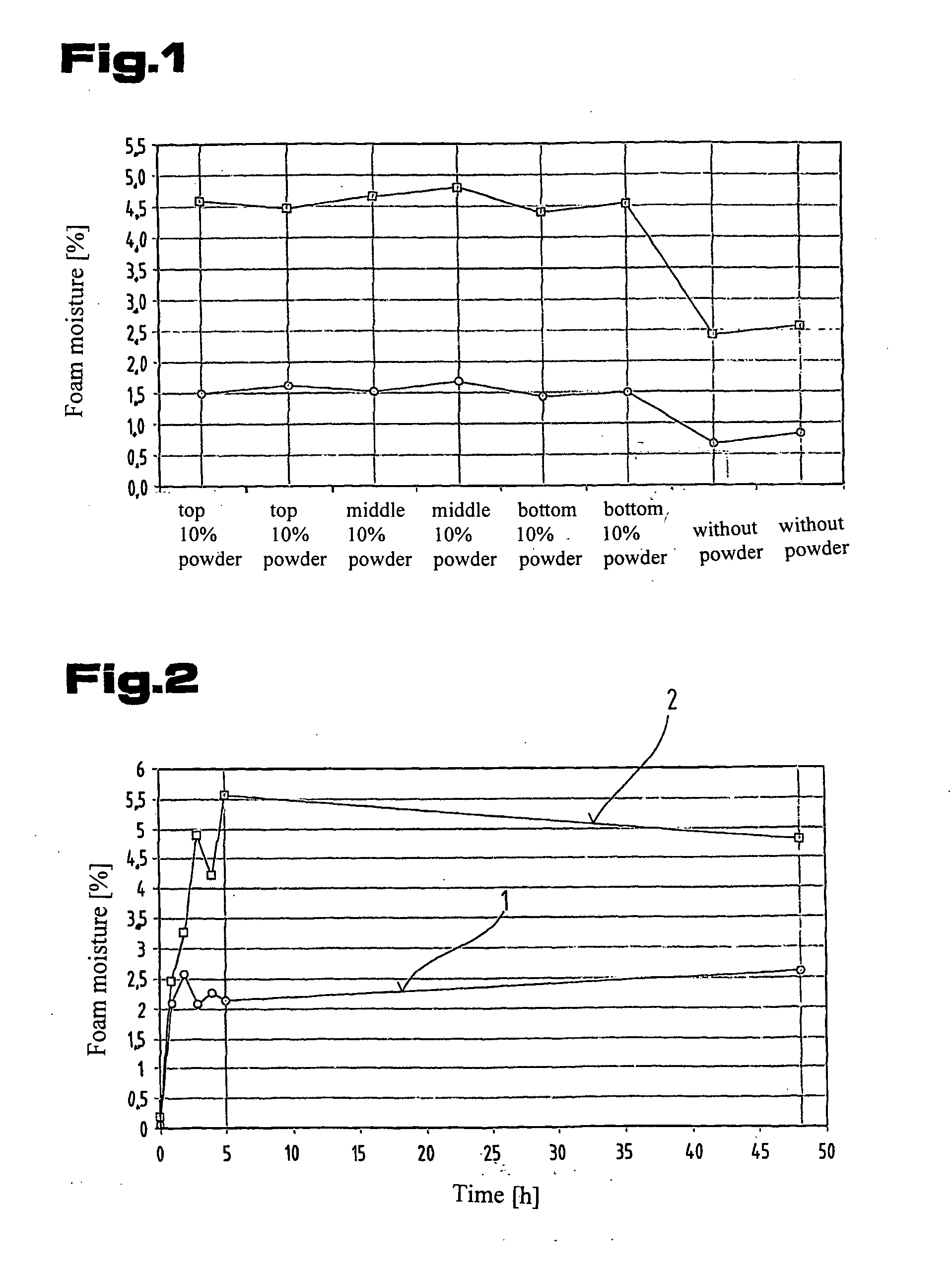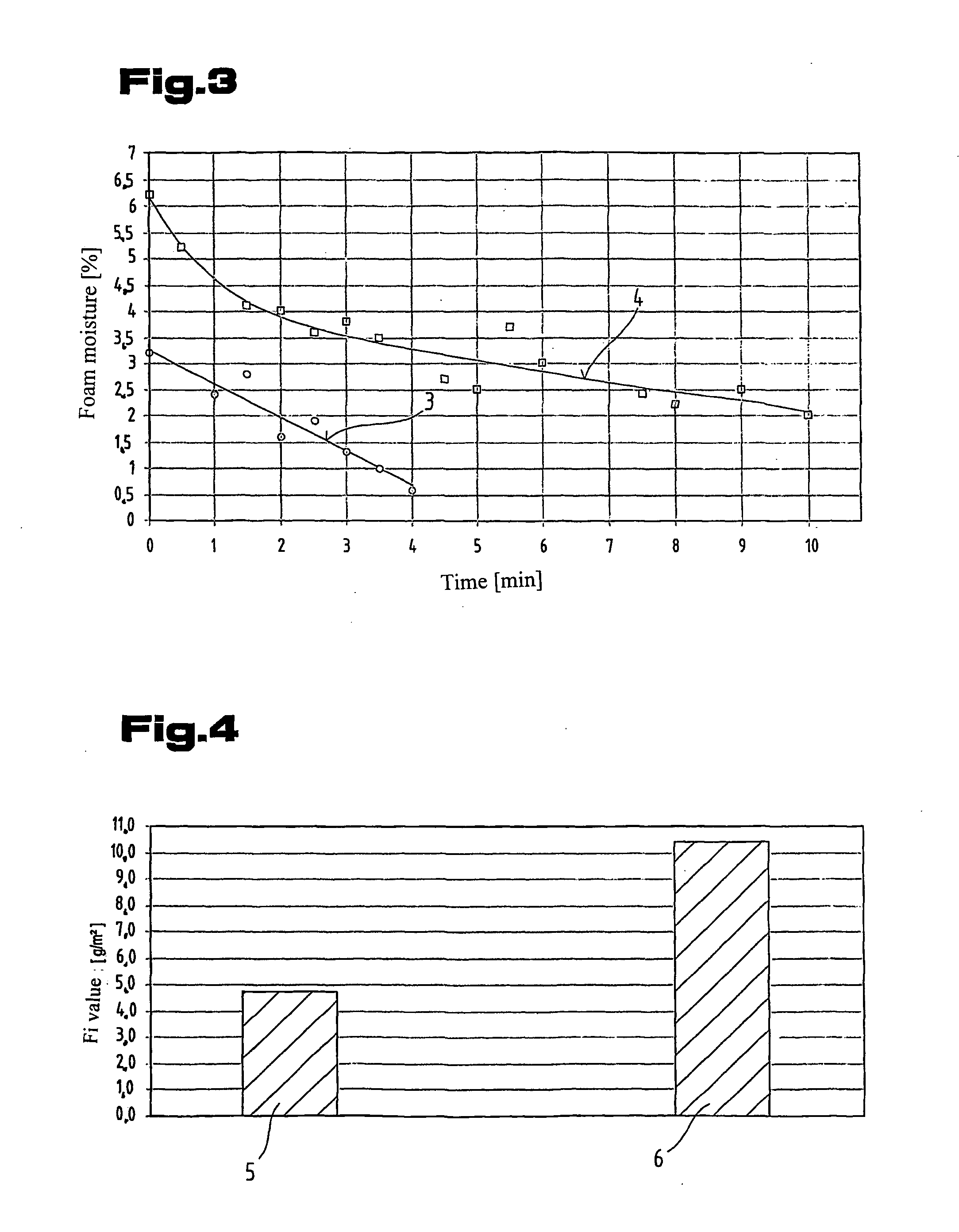Foam element with hydrophilic substances incorporated in it
a technology of hydrophilic substances and foam elements, applied in the field of foam elements, can solve the problems of unpleasant physical climate, insufficient water absorption capacity, and slow evaporation rate for normal applications,
- Summary
- Abstract
- Description
- Claims
- Application Information
AI Technical Summary
Benefits of technology
Problems solved by technology
Method used
Image
Examples
example 1
[0071]The foam element to be produced may be made from a plastic foam such as a polyurethane flexible foam for example, and a whole range of different manufacturing options and methods may be used. Such foams usually have an open-cell foam structure. This can be obtained using a “QFM” foaming machine made by the Hennecke company, and the foam is produced in a continuous process by a high-pressure metering process. All the necessary components are exactly metered under the control of a computer via controlled pumps and mixed using the stirring principle. In this particular case, one of these components is polyol, which is displaced with the cellulose particles described above. Since the cellulose particles are mixed with one reaction component, polyol, various adjustments have to be made to the formula, such as the water, catalysts, stabilisers and TDI in order to largely neutralise the effect of the cellulose powder incorporated for production purposes and the subsequent physical va...
example 2
COMPARATIVE EXAMPLE
[0073]To permit a comparison with example 1, a foam element was made from a plastic foam, which was produced without adding cellulose powder or cellulose particles. This might be standard foam, an HR-foam or a viscose foam, each made up by a known formula and then foamed.
[0074]The first objective was to ascertain whether the cellulose particles were uniformly distributed through all layers of the resultant foam element in terms of height. This was done by determining a so-called equilibrium moisture based on the water uptake of the foams in a standard climate at 20° C. and 55% r.h. and in another standardised climate at 23° C. and 93% r.h. To this end, sample pieces of the same size were taken from the foam blocks made as specified in example 1 and example 2 at three different heights and the water uptake in the two standardised climates described above was measured. In this respect, 1.0 m represents the top layer of the foam block, 0.5 m the middle layer and 0.0...
PUM
| Property | Measurement | Unit |
|---|---|---|
| temperature | aaaaa | aaaaa |
| density | aaaaa | aaaaa |
| length | aaaaa | aaaaa |
Abstract
Description
Claims
Application Information
 Login to View More
Login to View More - R&D
- Intellectual Property
- Life Sciences
- Materials
- Tech Scout
- Unparalleled Data Quality
- Higher Quality Content
- 60% Fewer Hallucinations
Browse by: Latest US Patents, China's latest patents, Technical Efficacy Thesaurus, Application Domain, Technology Topic, Popular Technical Reports.
© 2025 PatSnap. All rights reserved.Legal|Privacy policy|Modern Slavery Act Transparency Statement|Sitemap|About US| Contact US: help@patsnap.com



